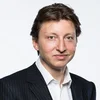
30 years of central banking
Central banks face credibility tests on a number of fronts
The past 30 years have heralded major change for central banks. Policy-makers in post-Soviet nations had to build or rebuild their institutions, as well as lead the transformation towards market-based economies. Meanwhile, many developed-world central banks followed the Reserve Bank of New Zealand by gaining operational independence to pursue price stability targets.
One of the world’s major central banks, the European Central Bank, came into existence in mid-1998. Amid rapid preparations during a six-month period, the ECB introduced a new currency, the euro, which quickly gained prominence as the second most important reserve currency. Inspired by the early success of the euro – and despite the economic disparities among 11 founding members and concerns among its architects – other trading blocs in Africa, the Middle East and Asia made plans to establish their own common currencies.
New innovation was embraced in currency management and banknote security. Notably, the Reserve Bank of Australia introduced the first polymer banknote series in 1992. There was a big drive towards payments efficiency and many central banks introduced real-time settlements to reduce settlement risks, including the Eurosystem’s Target2 in 2007.
That is not to say problems did not occur – and some of them were major. ‘Black Wednesday’ in 1992 resulted in the UK’s withdrawal from the European Exchange Rate Mechanism. Then, in 1995, the Mexican peso crisis resulted in an emergency $50 billion bailout organised by the US and administered by the International Monetary Fund. Asian countries suffered a financial crisis in 1997, with Thailand, Indonesia, Malaysia, the Philippines and South Korea bearing the brunt of a sharp withdrawal of portfolio flows. The Russian financial crisis resulted in the central bank spending $27 billion in a futile effort to defend the ruble.
Lessons were learned from these episodes. Mexico and other Latin American economies established fiscal compacts and adopted flexible exchange rates and inflation targets to establish vastly improved levels of economic stability (see ‘Latin America’s escape from hyperinflation’). Meanwhile, in Asia, many countries built up large levels of foreign exchange reserves to deter and ultimately combat potentially large portfolio outflows. They tightened up bank oversight and ring-fencing rules, and maintained the option to introduce capital controls – as used by Malaysia at the height of the Asian financial crisis.
The troubles of Asia and Latin America did not appear to be of much of a concern for major developed economies. Market forces were unleashed during an era of light-touch supervision. Central banks, meanwhile, attracted ever-greater numbers of highly trained economists to more closely examine the economy with the aim of making more prescient forecasts to inform policy decisions.
Compared with the inflationary episodes during the 1970s, central banks had notable success in keeping a control on prices – although there were some flashpoints
Compared with the inflationary episodes during the 1970s, central banks had notable success in keeping a control on prices – although there were some flashpoints (see timeline below ). These included inflationary periods in post-Soviet nations in the early 1990s, with newly (re-)established central banks pursuing sometimes brutal market-based reforms to rebalance their economies and get a firm handle on prices. Elsewhere, economic mismanagement resulted in Zimbabwe’s hyperinflation of 2007–09, followed by that of Venezuela from 2017 to this day.
But for most of the developed world, the great moderation was in full swing. Potential dangers ahead – as signalled by the Bank of Japan’s implementation of qualitative easing in 2001, as it attempted to avoid deflation following the bursting of its twin property and equity market price bubbles – went unnoticed, or were viewed as irrelevant: Japan was perceived largely as an outlier.
But everything changed with the advent of the global financial crisis.
Forged by crisis
The filing for bankruptcy by Lehman Brothers in 2008 was a trigger that exacerbated the free fall in US and global asset prices, accompanied by a sharp contraction in US dollar liquidity. Major banks refused to lend dollars to each other, anywhere in the world. The Reserve Primary Fund ‘broke the buck’. In moves of unprecedented scale, the US Federal Reserve unveiled currency liquidity swap lines with the Bank of England, the European Central Bank, the Bank of Japan and the Swiss National Bank (extending $530 billion to foreign central banks), and engaged in large-scale asset purchases – dubbed QE1. Banks were given liquidity life support and a number of major ‘too-big-to-fail’ institutions were nationalised.
The efforts by the Fed and the US Treasury alongside other public bodies around the world (including a massive fiscal stimulus in China) ensured that the global financial system held together. But the shockwaves in the financial and real economic system contributed to a property price collapse in some European countries and, ultimately, the eurozone sovereign and banking crises.
Much of the rest of the decade resulted in central banks and lawmakers trying to clean up the mess, while introducing new safeguards to prevent a similar collapse in the future. The Financial Stability Board was established under the Group of 20, and regulators drafted up new Basel III capital and liquidity rules. Banks were forced to build up capital. Some had core areas, such as payments, ring-fenced. Collateral frameworks were updated, and new resolution approaches introduced. Trade repositories and clearing facilities were established for most over-the-counter derivatives, and portfolio flows and shadow financial activities more closely monitored.
But – with some exceptions – central bankers and their economists largely failed to predict the global financial crisis, in part because their forecasting models failed to incorporate the financial cycle (see ‘30 years of forecasting: have central banks learned anything?’). Despite these failings, a number of central banks – such as the Bank of England and the ECB – were granted supervisory oversight of banks. And many central banks gained macro-prudential powers. The aim of macro-pru policies is to equip central banks with precision tools to address asset price imbalances and concentration risks before they become a problem. But, as explained in ‘Macro-pru is no panacea’, many macro-prudential tools are neither new nor infallible.
A decade of easing
The Federal Reserve, European Central Bank, Bank of Japan, Bank of England and Sveriges Riksbank have continued to provide monetary accommodation (described by Mohamed El-Erian as “the only game in town”). With the exception of the Fed, interest rates have remained close to or below zero, and balance sheets remain at multiples of pre-crisis levels.

As Central Banking founder Robert Pringle highlights in ‘Central banking’s 30-year cycle’, many of the problems of today appear remarkably similar to those that existed three decades or so ago, as the result of failed statist intervention to stimulate growth. Interest rates are once more suppressed, enabling governments to borrow at artificially cheap interest rates. And major central banks are again interfering in the allocation of credit – because of their purchases of private-sector instruments, such as corporate bonds, as well as their implementation of macro-prudential policies. Financial regulation, meanwhile, has become cumbersome and costly.
Depleted artillery
At the same time, central banks have little room to manoeuvre, should there be a marked slowdown in the global economy – the risk of which is increasing.
Their ability to cut their primary policy tool, interest rates, is severely degraded. Out of the major developed economy central banks, only the Federal Reserve, with its policy rate of 2.00–2.25%, has room for a sustained cut in interest rates – and even it has nothing like the 4–5 percentage points typically used. Forward guidance can have an impact, but it is limited and is far from perfect. In an interview with Central Banking, Bank of England governor Mark Carney details his experiences of using forward guidance.

Then there is the use of quantitative easing (favoured by Carney and others), yield curve control and twist operations. Some of the potential sequencing of future use of these tools is set out in ‘The future of balance sheet policies’. And Bank of Japan governor Haruhiko Kuroda offers some lessons from Japan’s experiences.
But there is concern over whether such tools will be sufficient, especially as none of the major balance sheet expansions of the past decade have been reversed. Most former central bank governors taking part in Central Banking’s 30th anniversary Editorial Advisory Board survey believe central banks have enough tools and are sufficiently creative to manage the next downturn. But a significant minority believe central banks will run out of policy options.

At the same time, central banks need to address the growing influence of financial markets versus banking and the asymmetry caused by the predominant use of the US dollar versus the size of the US in the global economy. ‘The great wave: global liquidity in a turbulent world’ discusses some of the fundamental issues.
For some, such as Warren Coats (who argues the case for the introduction of a ‘real SDR’), the system itself is the problem and it needs to be changed. For others, such as IMF financial counsellor Tobias Adrian, the current non-system needs to be reinforced. But neither Adrian nor Bank for International Settlements general manager Agustín Carstens could agree on an alternative to the current central bank swaps facilities and the need for greater IMF funding.
Digital revolution
Central banks will need to face up to future challenges, including climate risks (see ‘Five insights into China’s green finance transformation’), amid an acute challenge to their reputations and independence (61% of survey respondents said central banks would be less independent in the next 10 years). Pushing back against the populists will become vital. Another critical issue will be tackling technological change – with digital transformation offering both opportunities and threats.

Central banks themselves will need to embrace digitisation in a similar manner to that detailed by Joachim Wuermeling at the Deutsche Bundesbank. They will also have to ensure sound digital oversight. MAS managing director Ravi Menon highlights some key areas where regulators will need to make judgements on fintech risks, including regulating the blockchain, making the cloud safe, supervising artificial intelligence and defending against cyber risks.
Technology can be a great enabler. It will assist with economic modelling and monitoring of the financial sector. Many burdensome compliance processes will be automated. It also has the potential to lower costs for citizens and ensure more inclusive financial services. Indeed, the ubiquity of use of Alipay and WeChat Pay on mobile devices in China has fundamentally reshaped payments in the world’s second-largest economy, with the two dominant payment providers already processing more payments than Visa and MasterCard.
But central banks will need to be mindful how they regulate new payment operators, with the People’s Bank of China now requiring surplus Alipay and WeChat Pay funds to be held at the central bank. This will certainly be the case when it comes to deciding whether or not to introduce central bank digital currencies (CBDCs) – which could facilitate the use of negative interest rates, thereby potentially getting around the issue of a zero lower bound policy constraint. There is still a lack of consensus on which direction to go. But the likely creation of Facebook-proposed multi-currency stablecoin libra may push central banks to act, even if it is linked to the use of ‘synthetic’ CBDCs.
Only users who have a paid subscription or are part of a corporate subscription are able to print or copy content.
To access these options, along with all other subscription benefits, please contact info@centralbanking.com or view our subscription options here: http://subscriptions.centralbanking.com/subscribe
You are currently unable to print this content. Please contact info@centralbanking.com to find out more.
You are currently unable to copy this content. Please contact info@centralbanking.com to find out more.
Copyright Infopro Digital Limited. All rights reserved.
You may share this content using our article tools. Printing this content is for the sole use of the Authorised User (named subscriber), as outlined in our terms and conditions - https://www.infopro-insight.com/terms-conditions/insight-subscriptions/
If you would like to purchase additional rights please email info@centralbanking.com
Copyright Infopro Digital Limited. All rights reserved.
You may share this content using our article tools. Copying this content is for the sole use of the Authorised User (named subscriber), as outlined in our terms and conditions - https://www.infopro-insight.com/terms-conditions/insight-subscriptions/
If you would like to purchase additional rights please email info@centralbanking.com
Most read
- ECB says iPhone is currently incompatible with digital euro
- ‘Do I die, or do I survive?’ Officials reflect on Basel III complexity
- Supervisors grapple with the smaller bank dilemma




